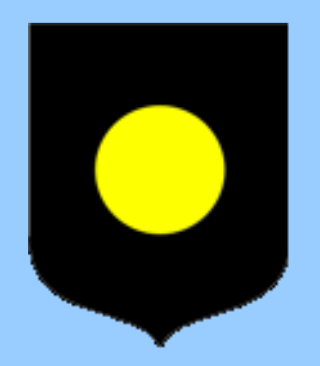Medieval bestiaries included birds and there are some examples that remain well known. Pelicans were thought to draw blood from their own breasts to feed their chicks – this translated as Christ’s sacrifice for the redemption of mankind. It’s a popular carving in churches. Doves haven’t changed very much and eagles were a symbol of resurrection because of its high flying.
Crows were devoted family birds and on occasion were described as an example of good parenting practise although they were also associated with death and war – something of a mixed message. The Twa Corbies was a popular medieval ballad and Shakespeare got in on the act as well -with crows and ravens as harbingers not only of death but also of defeat and planned murder. So I don’t think that the crow like bird on the unstitched coif is linked to any of those particular images – apart from the good parenting – I can’t imagine many women would want to associate themselves with war or defeat.
Ravens are, of course, rather important in the Tower of London as it is said that if they depart that England will fall. It derives from the idea of ravens keeping guard – making them much more benevolent than the ones that turn up in dreams and on battlefields.

There is a possibility my bird might be a heraldic image – corbie rampant regardant (standing upright looking back over its shoulder). A Complete Guide to Heraldry by Fox Davies identifies the raven as a significant bird. The Corbet family of the Welsh Marches have a raven on their coat of arms from the French Le Corbeau – it’s a canting allusion i.e. a pun. And the arms of the Yorkshire Creyke family is also a raven or crow as is the Korwin arms (think you can see the theme here). Unfortunately the Corbet ‘corbeau’ isn’t looking over its shoulder and the Creyke crest looks like an angry eagle with a hint of swan (probably a bad image I’m studying). The Isle of Anglesey has some very fine crows on its coat of arms and I love the raven on the arms of the episcopal see of Manchester (see below) but I don’t think that the bird on the unstitched coif is a heraldic bird although I did when I first saw it.
The next option is that it comes from an existing book of the period in much the same way that many of Mary Queen of Scots designs come from Gessner’s Icones Animalium, published in Zurich, 1560. The problem is that the coif dates to the seventeenth century by which time there was a wider range of printed material available for someone to use as inspiration for their own embroidery.
Of course, it might not be a corvid – it could be something else entirely?
Miller, Dean, Animals and Animal Symbols in World Culture


























